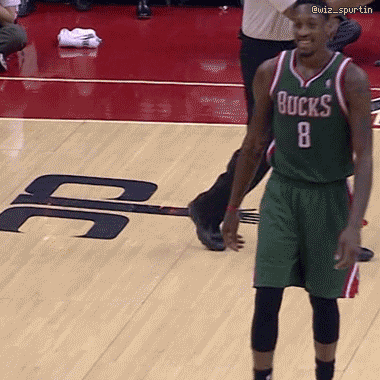https://theathletic.com/2373285/Another gem from Seth on why teams want guards to shooter the floater and how it works against teams if they try to take it away:
First of all, addressing these sorts of questions can be a little tricky because what’s a floater? I’ve written elsewhere that the “floater” shot type in the game description or play-by-play is unreliable; that sort of “enhanced shot description” is inconsistently applied and more likely to be added to the entry for a made shot than a miss. Charted shot distances are similarly tricky because, especially on a shot where the shooter is, well, floating toward the basket, the location of the shot isn’t always easy to determine. Further, some of the shots from this sort of area of the court could easily be the result of traditional post-ups rather than guards shooting runners or teardrops against a drop covering big.
It’s the best we can do, though, and looking at the last five seasons of data for shots taken in the 8- to 16-foot range, only two or three players per season end up shooting a high enough percentage on a significant number of attempts at this range (call it 52.5 percent to be the eFG% equivalent of a 35 percent 3-pointer, to “make a living” on this shot). Khris Middleton and Kevin Durant are two players who consistently score well from this range. But for most players, it’s pretty marginal.
Taking the floater is as much about trying to get the defender to react to the fact that you might take the floater. So, as Bickerstaff is suggesting, if the guard is simply going to get a spot and shoot a runner, that’s advantage: defense. In the clip used by Johnson above, the play is not especially well defended at the point of attack. But if the downside of that lack of perfect execution is a 2-point shot that most players will struggle to make half of, that’s not a whole lot of downside! As a defensive team, you aren’t satisfied with giving that shot up, but you’ll take it and hope the defender (Jrue Holiday in this case) gets enough pressure on the shooter to turn it from a high 40s-type shot to one in the low 40s.
....
Much as in poker, bluffing is a vital part of offensive repertoire. If the guard is never going to shoot this floater, the defense has it easy. Have the big drop and wall up in front of the rim. Players on the perimeter stay attached to shooters and dare the player to run smack into one of the best rim protectors in the league. However, just knowing that, in this case, Darius Garland will take that shot, now defenses have a decision to make. Even if on aggregate the percentages suggest making him hit the runner over and over again, if he makes one or two, there is enough doubt that by leaving him completely uncontested, the shot is going from a marginally bad and lower than average efficiency shot to becoming marginally above average. Forcing that decision in a moment of uncertainty is why the bluff has power.
The offense wants to take this shot —run this bluff — often enough to sow that confusion, but not so often that they are left taking a huge proportion of their shots from low percentage areas.
Of course, with a player like Durant or Middleton on the ball in these situations, the offense might be bluffing with the best hand, which is why those rare star players who can reverse the math on otherwise ill-advised shots are so valuable to begin with.


















